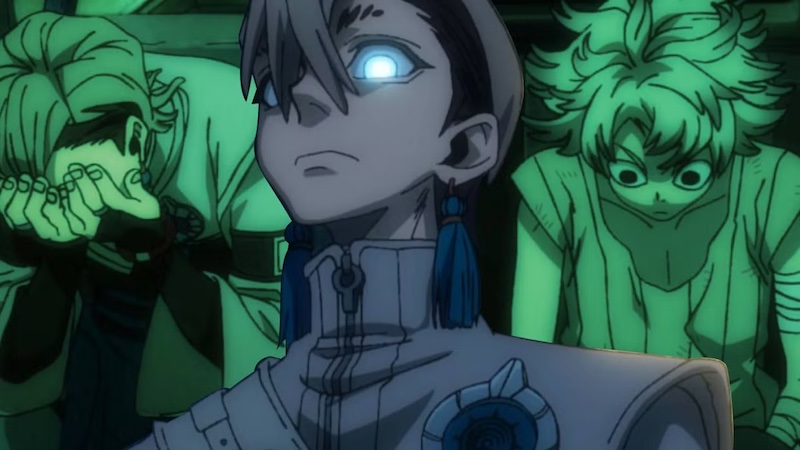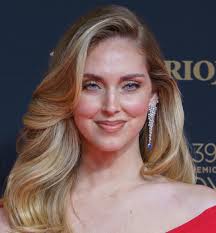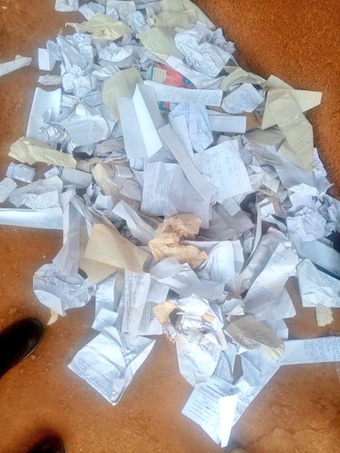
Each year surprises us with at least one blockbuster anime, a brand-new title that either reinvents an old formula (Demon Slayer), or crafts a fresh concept that captures our imaginations (Attack on Titan).
Gachiakuta will probably claim that crown this year. The show takes viewers to a setting where the world has become a massive garbage dump. Wealthy families live on a sky island that routinely ejects its waste to the lands below.
Rudo, the protagonist, was an outcast doing his best to survive on the fringes of the sky island when the powers that be killed his foster father, framed him for the murder, and kicked him off the island. Now, Rudo has sworn vengeance.
Gachiakuta is making waves because of the intriguing plot and the show’s distinct aesthetic. Even more fascinating are the conversations surrounding Kei Urana (the author). People are surprised that Gachiakuta’s author is a woman, because certain sections of the male anime/manga fandom avoid properties with female authors.
Before you accuse them of misogyny, that mindset makes sense. Most men gravitate towards shonen (action-heavy fantasy/sci-fi/ adventure stories that emphasize combat). On the other hand, femal authors typically write Shojo (female-led stories about romance, friendships, and personal growth).
Shojo literally means ‘Girls Comics’ while ‘Shonen Manga’ can be translated as ‘Boys Comics.’ Search for ‘Manga Written By Women.’ The images alone speak volumes about the tangible divide between these genres.
Titles like Cardcaptor Sakura, The Rose of Versailles, and Pandora Hearts have a weirdly dreamy art style. When male viewers/readers think of female authors, their minds immediately paint a picture of style and storytelling approach they don’t care for.
So naturally, learning that a woman wrote Gachiakuta compels them to question their preconceptions. Those preconceptions are further eroded when they realize that Kei Urana is far from unique. Demon Slayer is the biggest anime in the world at the moment, and it fits perfectly within the Shonen genre.
The show follows a plucky young hero wandering the land and fighting demons while searching for a cure for his sister, a demon, whom he carries in a box on his back. Guess what? The manga’s author is Koyoharu Gotouge, a woman.
Fullmetal Alchemist is the first anime/manga most of you consumed. It also sits comfortably in the top 5 of every ‘Best Manga/ Anime Ever’ list you see online. The protagonists are twin boys (Edward and Alphonse Elric) who lost their bodies after performing forbidden alchemy.
Ed replaced his missing limbs with automail. Then he sealed Al’s spirit within a suit of armour. They spend the series searching for a way to restore their bodies. The show has one of the most innovative magic systems in all of fiction, and the author is Hiromu Arakawa, a woman.
Blue Exorcist is nearly as influential as the likes of Soul Eater and D-Gray Man, having won the hearts and minds of newly minted anime fans in Uganda back in the late 2000s and early 2010s.
The horror/fantasy series follows Rin and Okumura, the sons of Satan, who decide to become exorcists when Satan kills the human (Father Shiro Fujimoto) who raised them. Kazue Kato, the author, is a woman. And yet she does an impeccable job of exploring male relationships.
Other notable shonen titles with female authors include Inuyasha (yes, that Inuyasha) by Rumiko Takahashi, Noragami by Adachitoka (the pen name for Adachi and Tokashiki, two female manga artists), Magi: The Labyrinth by Shinobu Ohtaka, Beastars by Paru Itagaki, and D. Gray-Man by Katsura Hoshino, to mention but a few.
The next time someone recommends a show or manga with a female author, don’t be so quick to dismiss it. Many of your favourite anime and manga were written by women.
katmic200@gmail.com



